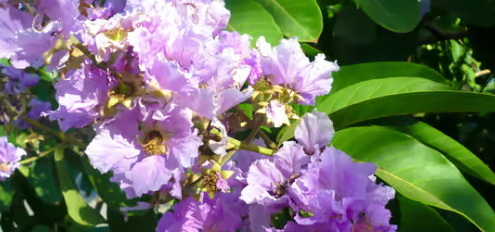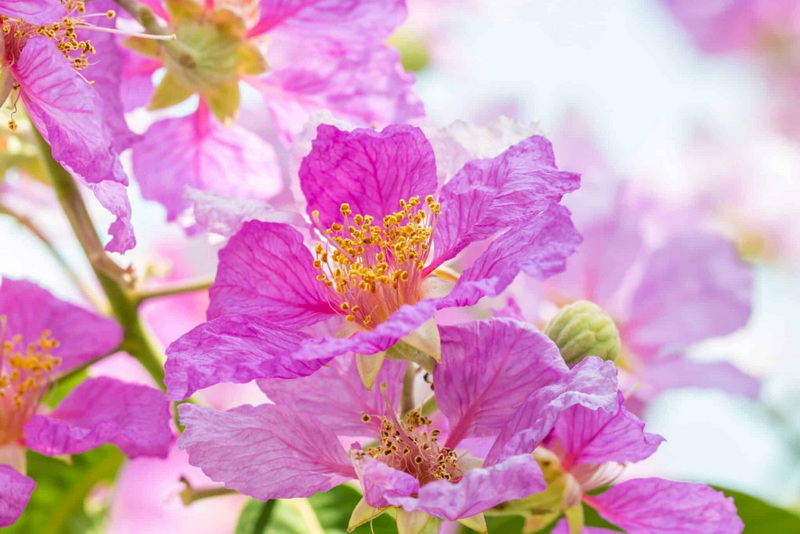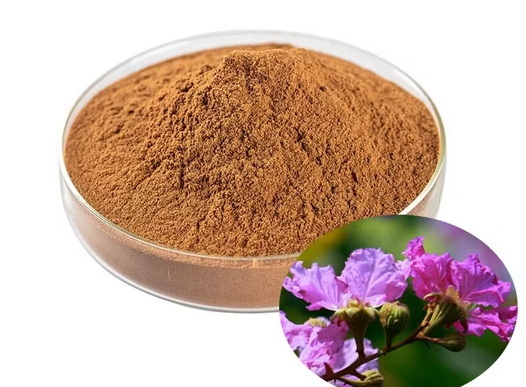Content Menu
● Introduction to Banaba Leaves
>> Banaba Tree Overview
● Extraction Methods
>> Conventional Extraction Methods
>>> Hot Water Extraction
>>> Organic Solvent Extraction
>> Microwave-Assisted Solvent Extraction (MASE)
>>> MASE Parameters
>> Ultrasonic-Assisted Extraction (UAE)
>>> UAE Parameters
>> Solvents Used in Extraction
>>> Ethanol Extraction
>>> Ethyl Acetate Extraction
● Analytical Techniques for Quality Control
>> High-Performance Liquid Chromatography (HPLC)
>> Kirby-Bauer Method
>> Gas Chromatography-Mass Spectrometry (GC-MS)
● Applications of Banaba Leaf Extract
>> Blood Sugar Control
>> Weight Management
>> Antioxidant and Anti-inflammatory Properties
● Safety and Side Effects
>> Potential Interactions
>> Precautions
● Conclusion
● Frequently Asked Questions
>> 1. What is the primary active compound in banaba leaves?
>> 2. What is the most efficient method for extracting banaba leaves?
>> 3. Which solvent is commonly used for banaba leaf extraction?
>> 4. What are the potential health benefits of banaba leaf extracts?
>> 5. How is the quality of banaba leaf extracts assessed?
● Citations:
Banaba leaves, derived from the Lagerstroemia speciosa tree, have gained significant attention for their potential health benefits, including blood sugar control and weight management. The extraction process of banaba leaves is crucial for producing high-quality supplements. This article will delve into the detailed process of extracting banaba leaves, highlighting the methods, solvents, and conditions used to optimize the yield of bioactive compounds like corosolic acid.

Introduction to Banaba Leaves
Banaba leaves are traditionally used in herbal medicine, particularly in Southeast Asia, for their antidiabetic and antiobesity properties. The primary active compound responsible for these effects is corosolic acid, a triterpenoid that enhances insulin sensitivity and glucose uptake in cells.
Banaba Tree Overview
The banaba tree is a deciduous tropical flowering tree known for its vibrant purple or pink flowers. It is commonly cultivated as an ornamental plant in tropical and subtropical regions. Besides its aesthetic appeal, the tree is valued for its timber and medicinal properties.
Extraction Methods
The extraction of banaba leaves can be achieved through various methods, each with its advantages and limitations.
Conventional Extraction Methods
Traditional extraction methods often involve hot water or organic solvents like ethanol or methanol. These methods are straightforward but may result in lower yields and longer extraction times.
Hot Water Extraction
Hot water extraction is a simple and cost-effective method. However, it may not effectively extract all bioactive compounds, particularly those that are less soluble in water.
Organic Solvent Extraction
Organic solvents like ethanol and methanol are commonly used for extracting bioactive compounds from banaba leaves. Ethanol is preferred due to its higher yield and bioavailability of corosolic acid.
Microwave-Assisted Solvent Extraction (MASE)
MASE has emerged as a more efficient technique for extracting bioactive compounds from banaba leaves. This method uses microwave energy to enhance solvent penetration and extraction efficiency, reducing processing time and environmental impact.
MASE Parameters
- Microwave Power: Studies have shown that using a microwave power of 500W yields the highest extraction efficiency for banaba leaves.
- Extraction Time: Optimal extraction times typically range from 2 to 6 minutes.
- Solvent-to-Material Ratio: A ratio of 10:1 (ml of solvent per gram of material) is often used for ethanol extraction.
- Temperature: Maintaining a temperature of 70°C during extraction can enhance the yield of corosolic acid.
Ultrasonic-Assisted Extraction (UAE)
UAE is another advanced method that uses ultrasonic waves to improve extraction efficiency. This method is particularly effective for extracting compounds that are difficult to dissolve in solvents.
UAE Parameters
- Ultrasonic Power: A power of 200W is typically used for optimal extraction.
- Extraction Time: Extraction times can range from 15 to 30 minutes.
- Solvent-to-Material Ratio: Similar to MASE, a ratio of 10:1 is commonly used.
Solvents Used in Extraction
Ethanol and ethyl acetate are commonly used solvents for banaba leaf extraction. Ethanol is preferred due to its higher yield and bioavailability of corosolic acid.
Ethanol Extraction
Ethanol is a polar solvent that effectively extracts corosolic acid and other polar compounds from banaba leaves. It is also a safer choice for human consumption compared to other organic solvents.
Ethyl Acetate Extraction
Ethyl acetate is less polar than ethanol and may be used for extracting specific fractions of compounds. However, it yields lower extraction efficiencies compared to ethanol.

Analytical Techniques for Quality Control
After extraction, the quality of the banaba leaf extract is assessed using various analytical techniques.
High-Performance Liquid Chromatography (HPLC)
HPLC is used to identify and quantify corosolic acid in the extract. This method ensures that the extract meets the required standards for bioactive compound content.
Kirby-Bauer Method
This method is employed to evaluate the antibacterial activity of the banaba leaf extract against different bacterial strains.
Gas Chromatography-Mass Spectrometry (GC-MS)
GC-MS is used for the identification of volatile compounds and other bioactive molecules in the extract.
Applications of Banaba Leaf Extract
Banaba leaf extracts are widely used in dietary supplements due to their potential health benefits.
Blood Sugar Control
Corosolic acid in banaba leaves has been shown to enhance glucose uptake in cells, making it a natural support for blood sugar management.
Weight Management
Banaba extracts are also marketed for their potential in aiding weight loss, although more research is needed to confirm these effects.
Antioxidant and Anti-inflammatory Properties
Banaba leaves contain antioxidants and anti-inflammatory compounds that may help protect against oxidative stress and inflammation.
Safety and Side Effects
While banaba leaf extracts are generally considered safe, they may interact with certain medications or exacerbate conditions like hypoglycemia. It is essential to consult a healthcare professional before using banaba supplements.
Potential Interactions
Banaba extracts may interact with diabetes medications, enhancing their effects and potentially leading to hypoglycemia.
Precautions
Pregnant or breastfeeding women should consult their healthcare provider before using banaba supplements due to limited research on their safety in these populations.
Conclusion
The extraction of banaba leaves involves careful selection of solvents, extraction methods, and conditions to maximize the yield of bioactive compounds like corosolic acid. Microwave-assisted solvent extraction offers a more efficient and environmentally friendly approach compared to traditional methods. As research continues to uncover the health benefits of banaba extracts, their use in dietary supplements is likely to grow.

Frequently Asked Questions
1. What is the primary active compound in banaba leaves?
The primary active compound in banaba leaves is corosolic acid, a triterpenoid responsible for its antidiabetic and antiobesity properties.
2. What is the most efficient method for extracting banaba leaves?
Microwave-assisted solvent extraction (MASE) is considered the most efficient method due to its high yield and reduced processing time.
3. Which solvent is commonly used for banaba leaf extraction?
Ethanol is the most commonly used solvent for banaba leaf extraction due to its high yield and safety for human consumption.
4. What are the potential health benefits of banaba leaf extracts?
Banaba leaf extracts are used to support blood sugar control, weight management, and may offer antioxidant and anti-inflammatory benefits.
5. How is the quality of banaba leaf extracts assessed?
The quality of banaba leaf extracts is assessed using techniques like HPLC to quantify corosolic acid and ensure the extract meets required standards.
Citations:
[1] https://animorepository.dlsu.edu.ph/etd_masteral/6891/
[2] https://bixabotanical.in/products/banaba-leaves-powder-lagerstroemia-speciosa
[3] https://www.ebay.co.uk/itm/375089146451
[4] https://patents.google.com/patent/JPH05310587A/en
[5] https://www.hsnstore.eu/brands/essential-series/banaba-extract-10-1-500mg
[6] https://naturalpoland.com/en/products/products-for-the-pharmaceutical-and-medical-industry/dietary-supplement-additives/banaba-leaf-exctract/
[7] https://naturalpoland.com/en/products/plant-extracts/banaba-leaf-exctract/
[8] https://patents.google.com/patent/CN105723405A/zh
[9] https://patents.google.com/patent/JP2005263650A/en






























